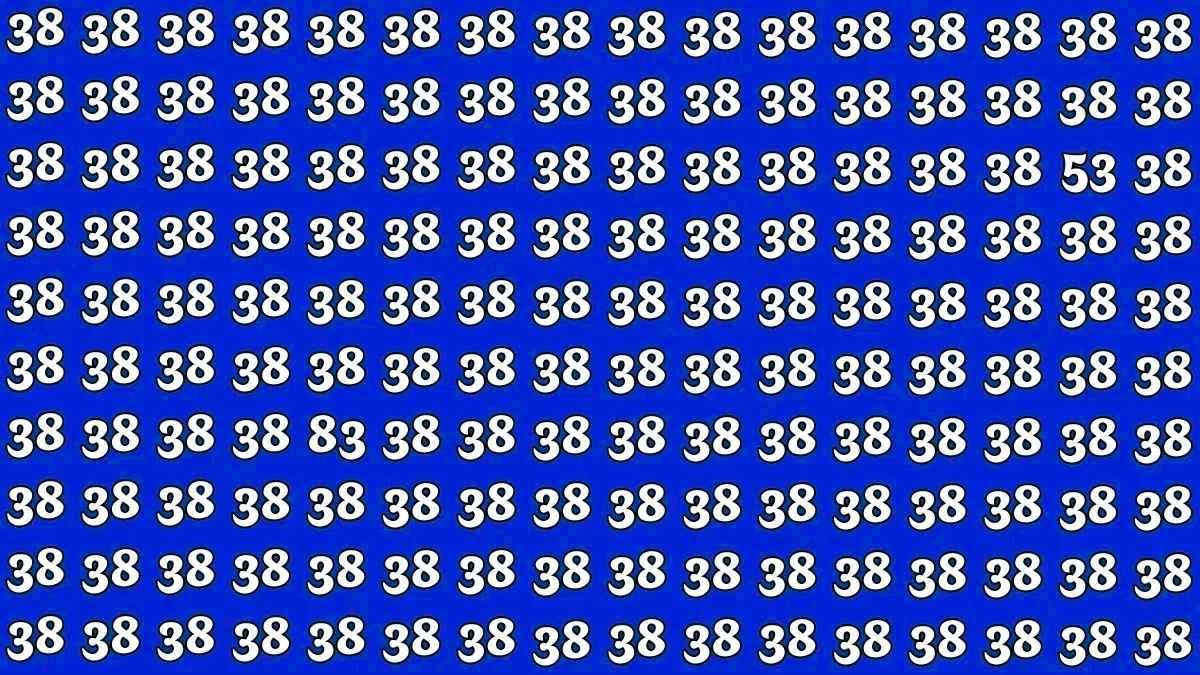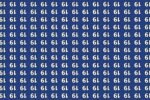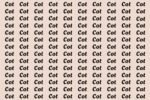In the world of optical illusions, few challenges are as perplexing as the one that involves the numbers 38, 53, and 83. At first glance, it seems like an innocent enough image, but as you dive deeper, it becomes clear that your brain is being tricked in fascinating ways. The 38s optical illusion has captivated people worldwide, leaving them scratching their heads as they attempt to spot the hidden 53 and 83 within the image.
So, what exactly makes this optical illusion so baffling, and why does it confuse our eyes and brains? In this blog post, we’ll break down the science behind the illusion, explain why it’s so difficult to spot the numbers, and offer tips on how you can train your eyes to see beyond the trickery.
What Makes Optical Illusions So Fascinating?
At the heart of any optical illusion lies a clever manipulation of visual cues. Our eyes are constantly sending information to our brain, interpreting what we see and forming a mental picture. However, optical illusions exploit the fact that the brain doesn’t always interpret visual stimuli accurately. Sometimes, the brain fills in gaps or relies on assumptions, leading us to see things that aren’t really there or miss things that are hidden in plain sight.
In the case of the 38s optical illusion, the challenge is that the numbers 38, 53, and 83 are designed in such a way that they can be perceived differently based on subtle shifts in perspective or focus. Our brains are trying to make sense of what it sees, but the design confuses its typical pattern-recognition processes, leaving us unsure of what we’re actually looking at.
The Challenge of Spotting the Hidden Numbers
The 38s optical illusion is particularly difficult because it relies on visual clutter and misdirection. The numbers are arranged in such a way that the 38s dominate the visual field, making it hard for the brain to discern the other numbers. The image is often filled with repeating patterns and overlapping shapes, creating a busy background that masks the 53 and 83.
For many, the first instinct is to focus solely on the 38s, which are designed to catch the eye. However, this overfocus on the obvious pattern makes it even harder to spot the hidden numbers. The 53 and 83 are cleverly integrated into the overall design, making them blend into the chaotic background in ways that are not immediately obvious.
How Our Eyes and Brain Work Together in Optical Illusions
When we look at an image, our eyes are constantly scanning and adjusting to focus on different elements. This process is called visual fixation, and it helps us understand and interpret the world around us. However, our brains don’t always interpret every visual detail accurately. In fact, the brain often makes assumptions to simplify what we’re seeing. For example, it might assume that a specific pattern or color means something specific, even when it’s not true.
Optical illusions take advantage of this natural tendency to simplify visual information. In the case of the 38s illusion, the brain’s tendency to focus on repetition and symmetry leads it to ignore the less obvious numbers 53 and 83 which are cleverly embedded in the image.
The Secret to Spotting the Hidden Numbers
So, how can you train your eyes and mind to spot the hidden 53 and 83 in the 38s illusion? It’s all about changing your focus and adopting a new perspective. Here are a few techniques that can help you crack the code:
1. Look for Discrepancies in the Shape and Pattern
The key to spotting the hidden numbers lies in noticing discrepancies in the shape and pattern of the digits. The 38s in the image are arranged in repeating patterns, but within these patterns, there are slight variations that make the 53 and 83 stand out. These numbers might appear in slightly different font styles, sizes, or orientations. Pay close attention to any unusual shapes or breaks in the otherwise uniform arrangement.
2. Change Your Viewing Distance
Sometimes, the best way to reveal hidden elements in an optical illusion is to change your viewing distance. Try stepping back from the image and looking at it from a different angle. Alternatively, you can bring the image closer to your eyes and focus on one small section at a time. This shift in perspective can help your brain notice the hidden numbers that might be obscured by the visual clutter when viewed from a standard distance.
3. Take Your Time and Relax Your Eyes
Our eyes can sometimes become overwhelmed when presented with a busy, complex image. In the case of the 38s illusion, the brain’s instinct is to quickly process the information and form a coherent image, but this rapid processing can lead us to overlook key details. Try to relax your eyes and avoid focusing too intensely on any one part of the image. Take your time and let your eyes wander over the entire image slowly and methodically. This will give your brain the opportunity to recognize the hidden numbers without getting distracted by the overwhelming pattern of 38s.
4. Focus on the Negative Space
When you focus on the negative space within an image (the empty or unoccupied areas), you might begin to notice things that you wouldn’t otherwise see. In the case of the 38s illusion, the negative space between the 38s might reveal the outlines of the hidden 53 and 83. By shifting your focus away from the dominant 38s and looking at the empty spaces in the image, you can trick your brain into spotting the numbers that are cleverly camouflaged.
5. Adjust Your Focus to Find the Hidden Numbers
Your eyes are capable of focusing on one part of an image at a time, but the trick is knowing where to focus. In the 38s illusion, the hidden 53 and 83 can sometimes be revealed by simply adjusting your focus to the areas where the pattern starts to break down. Often, the numbers are hidden within sections of the image that look similar to the surrounding 38s, but with a slight alteration in form.
The Science Behind Optical Illusions
Optical illusions like the 38s illusion provide valuable insight into how our brains process visual information. They highlight the gap between what we perceive and what’s actually there, showing how our brains rely on context, patterns, and assumptions to make sense of the world. By studying optical illusions, scientists and psychologists can gain a deeper understanding of human perception and cognition.
In the case of the 38s illusion, our brain is being tricked by the repetition and symmetry of the 38s. The brain tends to gravitate toward familiar patterns, and this makes it difficult to notice the hidden numbers that disrupt this familiarity. The fact that 53 and 83 are both numbers that are somewhat visually similar to 38 only adds to the confusion.
Conclusion: A Fun Challenge for the Mind
The 38s optical illusion is more than just a playful trick it’s a fascinating example of how our brains work, and how easily they can be misled. While it might take a bit of patience and focus to spot the hidden 53 and 83, the challenge is part of what makes optical illusions so captivating.
By applying the tips and tricks outlined in this blog post, you’ll improve your ability to spot hidden numbers in this illusion and others like it. Remember, the key is to relax, change your perspective, and trust your brain’s ability to process complex visual information. Keep practicing, and you’ll soon become an expert at spotting hidden details in even the trickiest optical illusions.




